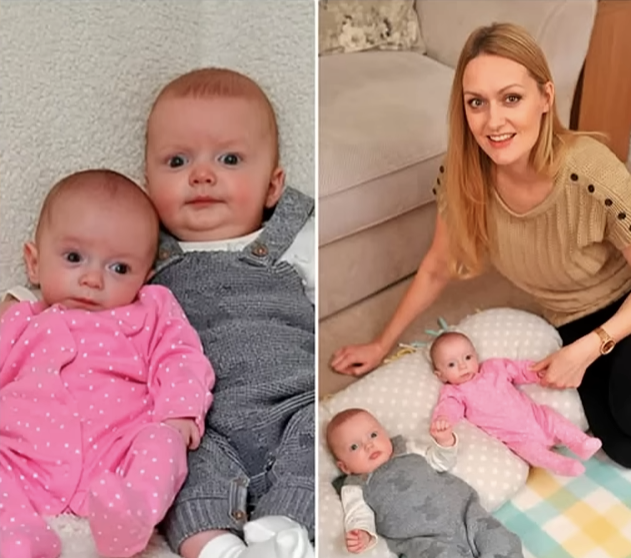
When Rebecca Roberts first saw the positive result on her pregnancy test, she was overjoyed. It was her first baby, and she was already dreaming of the tiny kicks, the late-night cravings, and the first cry that would change everything.
Three weeks later, her excitement turned to confusion. A follow-up ultrasound revealed something her doctors couldn’t explain at first—a second heartbeat. Two babies. Twins. But not quite.
Rebecca hadn’t conceived twins in the usual way. Her second baby had been conceived three weeks after the first. Doctors call it superfetation—a phenomenon so rare that it’s been documented only a dozen times in the world.
In most pregnancies, hormonal changes prevent ovulation after conception. But somehow, Rebecca’s body didn’t get the message. Against all odds, she ovulated again, and another egg was fertilized. Two babies, conceived three weeks apart, growing together in the same womb.
Throughout the pregnancy, doctors kept a close watch. Baby Noah, the first conceived, grew slightly ahead. His sister Rosalie, the second, lagged behind, much smaller but just as strong. Every scan brought both wonder and worry—how would they arrive safely? Would Rosalie be strong enough to survive?
At 33 weeks, Rebecca went into labor. Noah was born first, weighing 4 pounds 10 ounces. Tiny but healthy. Moments later, little Rosalie entered the world, weighing just 2 pounds 7 ounces—barely half his size. She was immediately taken to the neonatal intensive care unit (NICU).
For days, Rebecca watched her babies from two different rooms—Noah beside her, Rosalie surrounded by machines and tubes. She said it was both beautiful and heartbreaking—loving two miracles who had shared her body, now fighting their separate battles.
Rosalie stayed in the NICU for weeks. Nurses called her a fighter. Every ounce gained was celebrated, every steady breath a small victory. On Christmas Eve, Rebecca received the news she’d been praying for: Rosalie was coming home.
That Christmas, the Roberts family gathered by the tree with both babies in their arms. Noah slept soundly in his little reindeer onesie, and Rosalie lay against her mother’s chest, finally free of wires. Rebecca called it “the best gift I could ever imagine.”
Today, both twins are thriving. Noah, the “big twin,” is playful and curious. Rosalie, smaller but full of spirit, keeps up with her brother in every way that matters.
Rebecca smiles when people ask about them. “We call Noah her big twin brother,” she says. “He’ll always be three weeks older, but to me, they’re two halves of the same miracle.”
Their story has captured hearts around the world—not just for its rarity, but for what it represents: the impossible made real, the miracle of life finding its own way, even when science says it shouldn’t.
One in a million doesn’t even begin to describe it.